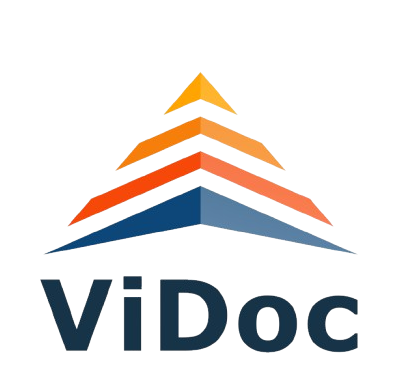Declutter. De-bottleneck. Improve TATs.
Efficient management of the purchase flow is vital for organizational success in today’s business environment. This case study delves into how the implementation of Centris®, ViDoc’s breakthrough solution substantially enhanced the purchase flow within an organization, alleviating existing struggles, reducing overheads, and notably improving turn-around times.
Challenges Faced
1. Manual Processes:
Purchase orders, invoices, and related documents were managed manually, leading to delays, errors, and inefficiencies.
2. Lack of Visibility:
Document retrieval and sharing among departments were labour-intensive, resulting in a lack of real-time visibility into purchase status and vendor interactions.
3. Security Concerns:
The organization struggled to ensure the confidentiality and integrity of sensitive purchase documents, posing security concerns and compliance risks.
4. Lost Documents:
Misplacement or loss of paper-based documents added delays to procurement processes and increased administrative overhead.
Role of Key Features in Centris Implementation:
Automated Workflows
Centris introduced automated workflows for purchase orders, invoices, and approvals. Purchase orders were now automatically routed for approval based on predefined criteria, significantly reducing processing times and eliminating bottlenecks.
eSign
Integration of eSigning capabilities enabled digital approval of purchase documents, eliminating the need for manual signatures. This streamlined the approval process, reducing turn-around times and enhancing overall efficiency.
Encryption
Advanced encryption protocols were implemented to safeguard sensitive purchase documents, ensuring data confidentiality and compliance with regulatory standards. This additional security layer mitigated the risk of data breaches and unauthorized access.
Central Storage & Document Sharing
Centris facilitated central storage seamless document sharing, allowing authorized personnel to securely access purchase documents from any location at any time. This centralized repository improved collaboration, version control, and document retrieval efficiency.
Metadata
Metadata tagging was utilized to categorize and organize purchase documents, enhancing searchability and retrieval. This reduced the time and effort required to locate specific information, further contributing to improved turn-around times.
Vendor Portal
A dedicated vendor portal was integrated with Centris, enabling suppliers to securely upload and submit documents directly. This streamlined document exchange process improved vendor collaboration and communication, contributing to faster TATs in procurement transactions.
How Centris Solved the Problem:
Before
Manual processes and paper-based approvals led to lengthy turn-around times for purchase orders.
After
Automated workflows and eSigning capabilities expedited the approval process for purchase orders and invoices, significantly reducing turnaround times.
Document retrieval and sharing relied on manual searches and physical document transfer, causing delays and inefficiencies.
Centralized storage and document-sharing functionalities enabled quick access to purchase documents, improving collaboration and decision-making.
Security concerns and lost documents added further delays to procurement processes, impacting turn-around times negatively.
Enhanced security measures, including encryption and metadata management, ensured compliance and minimized the risk of lost documents, further improving turn-around times in procurement processes.
Centris® has significantly enhanced procurement efficiency within the organisation, yielding impactful results that directly influence the bottom line.
Through the alleviation of existing struggles, reduction of overheads, and introduction of key features such as automated workflows, eSign, encryption, document sharing, central storage, metadata management, and a vendor portal, Centris has streamlined processes, fostered collaboration, and positioned the company for sustained growth and success in its operations.
The reduction in processing times, mitigation of manual errors, and strengthened compliance measures have not only optimized operational costs but also enhanced productivity, ultimately bolstering the organization’s profitability.



